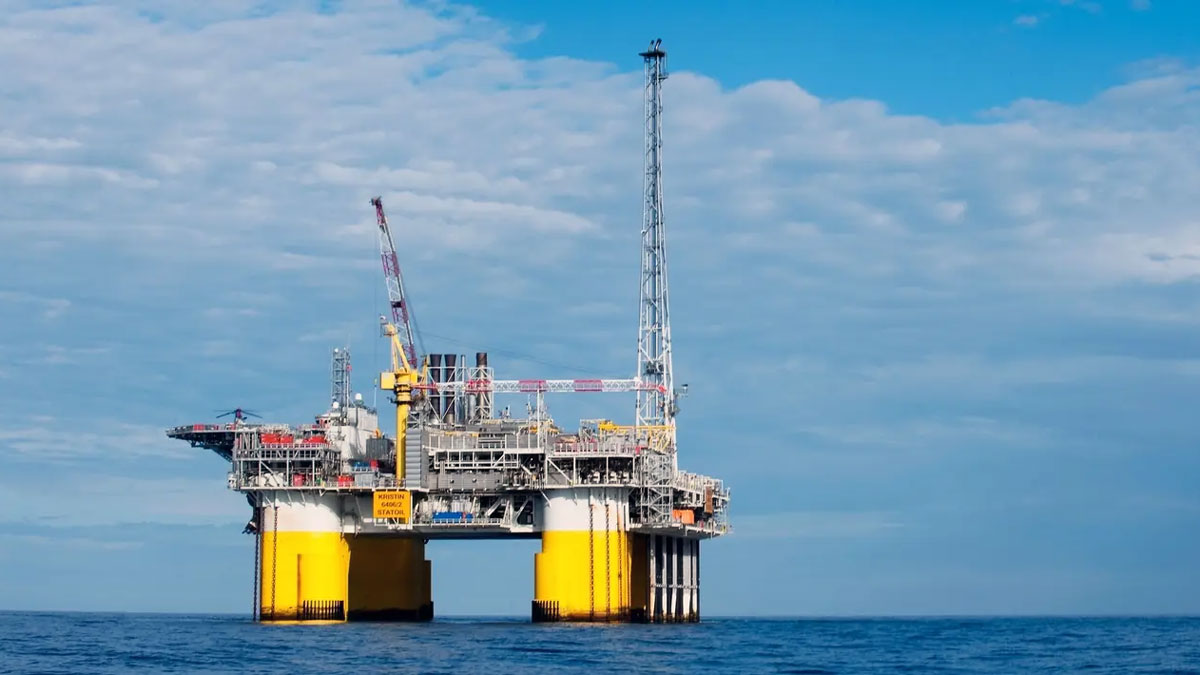Equinor Starting 1st Phase of Kristin South Project
Equinor and its partners Petoro, Vår Energi, and TotalEnergies EP Norge started production from the first Lavrans well in the Kristin South area on 7 July.
The partnership submitted the plan for development and operation (PDO) of the Lavrans and Kristin Q discoveries as satellites to the Kristin field in 2021. This is the first phase of the Kristin South project. The PDO was approved by the authorities in 2022.
“The Kristin South project demonstrates our strategy to create value by developing existing infrastructure on the Norwegian Continental Shelf. Together with our partners and suppliers, we have developed the project and started the production from Lavrans in a safe and good way,” says Trond Bokn, senior vice president for project development in Equinor.
A new subsea template has been installed and tied into the Kristin platform, now processing oil and gas from the first well at the Lavrans field. The gas will be exported through the pipeline system to the European market, while the oil will be transported to the market by ship via the Åsgard C storage vessel.
Four additional wells are planned as part of the first phase of the Kristin South project, three at the Lavrans field and one in the Q-segment at the Kristin field. The latter will be drilled from an existing subsea template that has been tied back to the Kristin SEMI.
The expected production in phase one of the Kristin South project is in the PDO estimated at 6.2 GSm3 of gas and 1.9 MSm3 of oil (a total of 58.2 million barrels of oil equivalent).
“This is a key milestone in our plan to continue to develop new resources in a mature area in the Norwegian Sea. Tying in additional resources to our producing hubs is a cost-efficient way to add production and extend the lifespan of our fields in operation. This approach contributes to energy security and job creation in Norway,” says Grete B. Haaland, senior vice president for Exploration & Production North.
The CO2 intensity for extraction and production of Kristin South phase 1 is very low – less than 1 kg of CO2 per barrel of oil equivalent. The emissions will mainly be generated from the project’s drilling activities.
Norwegian suppliers have been awarded over 60% of the contract values in the development phase creating ripple effects along the coast. The project is estimated to have created 4,000 person-years across Norway, with 800 in the Mid-Norway region, over the 2020-2025 period.
Lavrans was discovered in 1995, while the Kristin field was put on stream in 2005. The technical lifetime of the Kristin platform is currently estimated to be 2043 with potential for further extensions.
Partners (Haltenbanken Vest Unit): Equinor Energy AS (54.82%, operator), Petoro AS (22.52%), Vår Energi ASA (16.66%), TotalEnergies EP Norge AS (6%).
Contracts
- Aker Solutions/OneSubsea and subcontractors: Subsea production facilities
- TechnipFMC and subcontractors: Pipeline fabrication, pipelaying, and subsea installation
- Aibel and subcontractors: Engineering, procurement, construction, and installation for Kristin platform modification
- Transocean Spitsbergen: Rig contractor
Kristin
Located in the southwestern part of Haltenbanken in the Norwegian Sea the Kristin gas and condensate field came on stream on Tuesday 3 November 2005.
Discovered in 1997, the Kristin field was approved for development and production on 17 December 2001. Equinor took over the operatorship from the initial operator, Saga Petroleum, on 1 January 2000.
The field development concept consists of four 4-slot subsea templates tied back to a semi-submersible production platform for processing. Light oil is separated and stabilized at Kristin and transferred to Åsgard C for storage and shipment.
Kristin is a host platform for Tyrihans (Equinor-operated) and Maria (Wintershall-operated). The fields came on stream in 2009 and 2017 respectively.
Located at a depth of almost 5000 metres the reservoir pressure and temperature, at 900 bars and 180 degrees Celsius respectively, were higher than in any other field developed so far on the Norwegian continental shelf.
The production capacity at Kristin is 125,000 barrels of condensate and just over 18 million cubic metres of rich gas per day.
In 2014 low-pressure production started at Kristin, adding a couple of hundred million barrels from Kristin and Tyrians, thus extending the field’s economic life.
The design life of the Kristin platform ends in 2034.
Maria
The Wintershall-operated Maria field at Haltenbanken came on stream on 16 December 2017. Located some 20 kilometres east of Kristin and 45 kilometres south of Heidrun, the field was discovered in 2010. Total production is estimated at around 180 million barrels of recoverable oil. The Maria development concept includes a subsea facility tied back to three Equinor-operated platforms; Kristin, Heidrun and Åsgard B, via Tyrihans. By being tied back to existing infrastructure and with a planned production period of 25 years Maria will help extend the productive lives of several other fields.
Kristin South
Back in June 2021 Equinor and the partners Petoro, Vår Energi and Total Energies submitted the plan for development and operation of the Lavrans and Kristin Q discoveries as satellites to the Kristin field. This is the first phase of the Kristin South project.
The plan for development and operation of the Kristin South project is also a possible next phase for Lavrans, in addition to possible development of the Erlend and Ragnfrid discoveries.
Kristin Q is located in the southern part of the Kristin field. Like the rest of the Kristin field, this is a high-pressure, high-temperature reservoir.
Location: In the southwestern part of Haltenbanken
Start-up: 3 November 2005
Production: Gas, condensate and rich gas.







